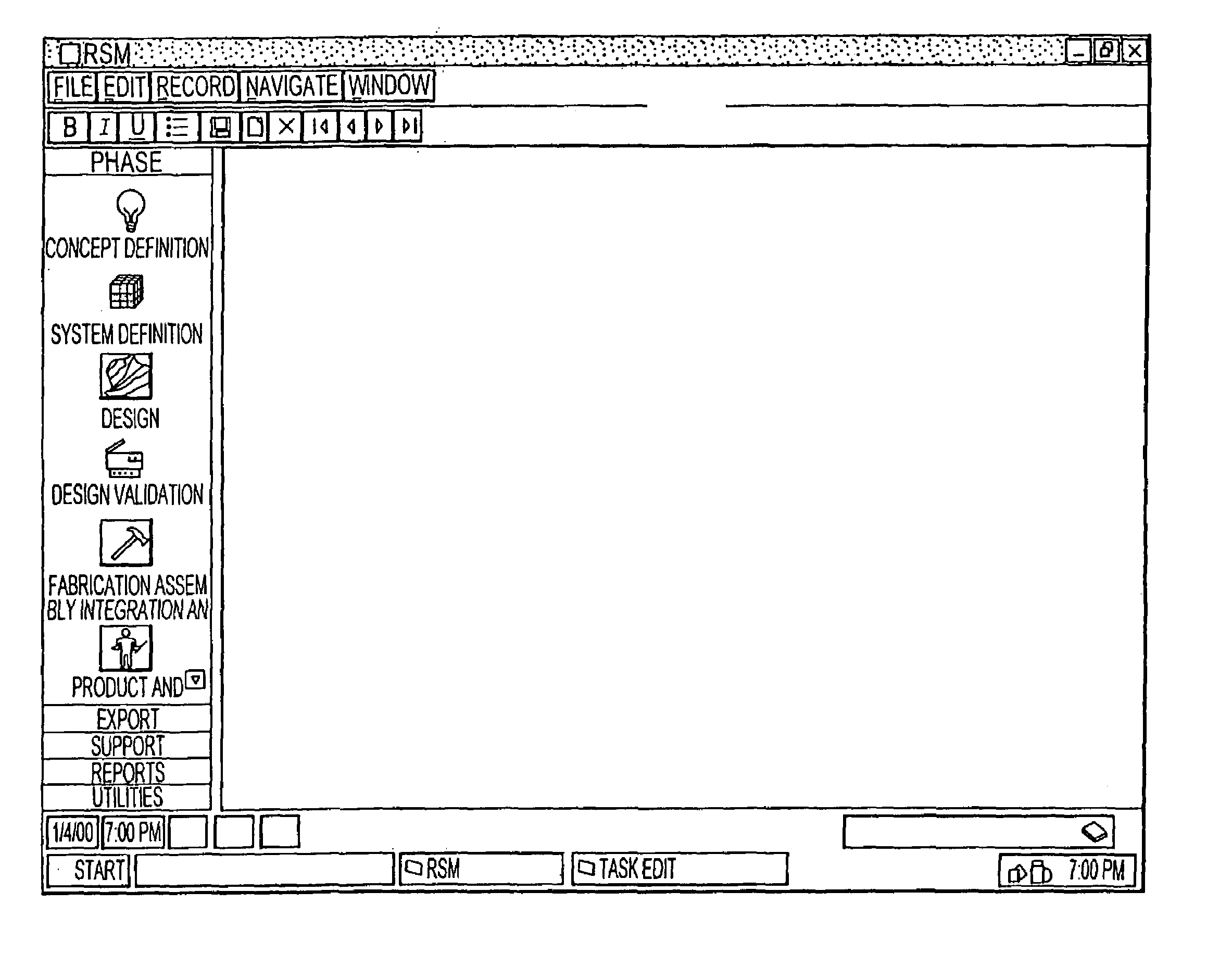Project planning system with content loaded project planning template generator and a plurality of content loaded project planning templates
a project planning and content-loaded technology, applied in the field of product development systems, can solve the problems of inability to provide coherent information transfer throughout the organization, inability to show you how to write a book, and inability to show you how to plan and integrate the product development process of microsoft project or project office, so as to reduce the development time and increase the probability of product or service success
- Summary
- Abstract
- Description
- Claims
- Application Information
AI Technical Summary
Benefits of technology
Problems solved by technology
Method used
Image
Examples
Embodiment Construction
[0059]The invention organizes information into five modules that encompass the activities of an organization to achieve the goal of reduced product development time, cost and risk. The general sequence and function of the five modules involve, a first strategy module which assists the customer in gathering the necessary information to refine the vision of the organization. Through the use of various information organization techniques, the strategy for the product(s) are templated and organized to yield a vision and be compiled into a repository for the organization for use during the product development life cycle, and for usage by the organizations various functions in reporting and creating measures for future products. One of the key elements of this phase is the creation of the information stream in such a manner as to affect ease of communication throughout the organization for further use and memorialization as part of the repeatability afforded by the invention.
[0060]A secon...
PUM
 Login to View More
Login to View More Abstract
Description
Claims
Application Information
 Login to View More
Login to View More - R&D
- Intellectual Property
- Life Sciences
- Materials
- Tech Scout
- Unparalleled Data Quality
- Higher Quality Content
- 60% Fewer Hallucinations
Browse by: Latest US Patents, China's latest patents, Technical Efficacy Thesaurus, Application Domain, Technology Topic, Popular Technical Reports.
© 2025 PatSnap. All rights reserved.Legal|Privacy policy|Modern Slavery Act Transparency Statement|Sitemap|About US| Contact US: help@patsnap.com



